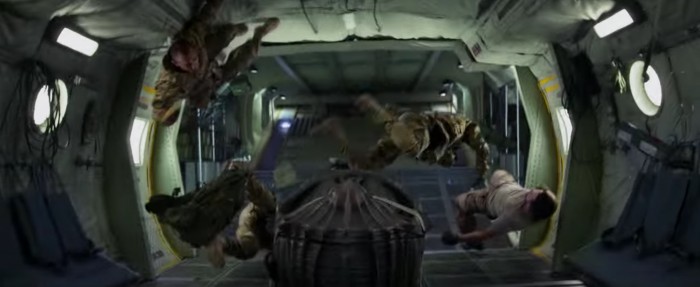'The Mummy' Airplane Sequence Was Shot In Zero G Using The Vomit Comet
Now that you've seen the trailer for The Mummy, you might be surprised to learn that they shot that intense plane sequence partially in the Weightless Wonders reduced-gravity aircraft. Learn more about how Tom Cruise convinced director Alex Kurtzman to film The Mummy airplane sequence in real zero-g weightlessness, after the jump.
Earlier this week, I was invited to an event where we got to talk to The Mummy director Alex Kurtzman about the upcoming Universal monster movie. The filmmaker revealed that the thrilling plane sequence, which is the focus of the first half of The Mummy teaser trailer, was actually shot partially on the vomit comet zero-g airplane. Kurtzman explained how you traditionally film a sequence like this:
So there's a plane crash sequence and traditionally when you do a plane crash sequence inside of a plane, what the studio will tell you is, "Okay, fine, you're going a rotisserie set and you're going to do a lot of green screen work on the set and we're going to do cables and blah-blah-blah," right? Now to some extent, if you want it to be a visceral experience and you want to go there, you do need to build – at the very least – a rotisserie, which essentially a massive set that rotates so you can have the visual experience of it, so you the camera can move through that space steadily enough to capture all the actors tumbling all over the place. It's the kind of thing that [Christopher] Nolan did in Inception, [Stanley] Kubrick pioneered it in 2001. It is kind of the most immersive way to go.
So why did they decided instead to shoot it in the Vomit Comet? Tom Cruise:
When I brought this up with Tom [Cruise], I said, "Here's what we're going to do, we're going to build the set," he said, "Yeah, yeah, but we've got to do it for real." I was like, "What do you mean?" He's like, "We're going to up in the vomit comet!" and I said, "What?" And he said, "We're going to go up in the vomit comet. We're going to go to the vomit comet and we're going to shoot the whole sequence there too." I said, "Yeah, but we can't do it ALL in the vomit comet because the sequence is so extensive." He said, "I know, we're going to build that rotisserie set, we're going to do part of it there and we're going to do part of it in the vomit comet." So that is what we did. So everything in that plane is totally practical and traditionally, a lot of that would have been people on wires against a green screen.
Alex explains how the Vomit Comet works:
So you go up, basically with the G's of a rocket going into space. Then you even out and everything starts to go weightless, and then you free-fall for 22 seconds and everybody goes up in the air. We had grips holding lights and puking while the shot was going on. I mean, it was the craziest experience ever and ultimately worth it because I think, again, our whole thing was "Let's do this without cuts. Let's really do this so that you can actually stay in this shot and watch these guys float around and go, 'How the hell did they do it?'"
Alex, Tom and the crew shot the sequence over sixteen parabolic arcs per flight over two days, which is 25 seconds or so of weightlessness sixteen times a flight, with a total of four trips.
The planes are known unofficially as the "vomit comet" because the aircraft gives its occupants the sensation of weightlessness by "following a parabolic flight path relative to the center of the Earth." This plane is traditionally used by NASA to train astronauts in zero-g maneuvers, but it has also been available as an experience for US tourists for the last 12 years. In about two-thirds of the passengers, these flights produce nausea which has resulted in the aircraft's "vomit comet" nickname.
For The Mummy, the crew members on board each had a bag that they held in front of them, "and the hope is that when you do vomit you manage to grab all of it in the bag before the chunks float off into space." And you might be thinking that this was a lot to go through to achieve realism. It probably cost much more than using CG to complete the sequence on a rotating plane rig, but you'd be wrong.
"And the funny part is, if you were to cost both at the end of the day, it actually is probably the same. So for what we wanted to do, which is put you guys in this totally immersive environment and make you feel like you were there, it's those kinds of decisions that make a huge difference – huge, huge difference – just to the experience of a moment like that."
The vomit comet has been utilized in a few movies previous to this, but mostly for space-set stories. Apollo 13 was one of the first movies to use the aircraft.

